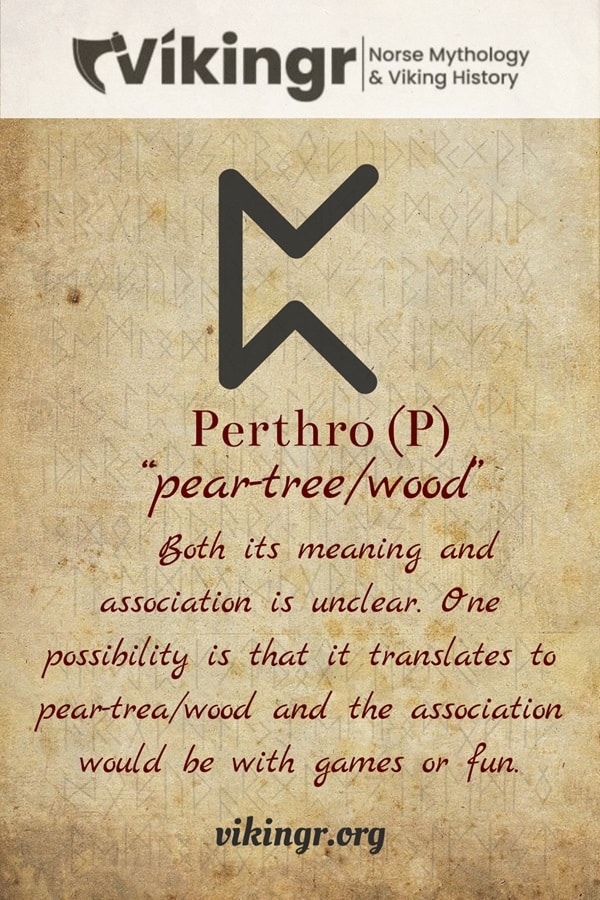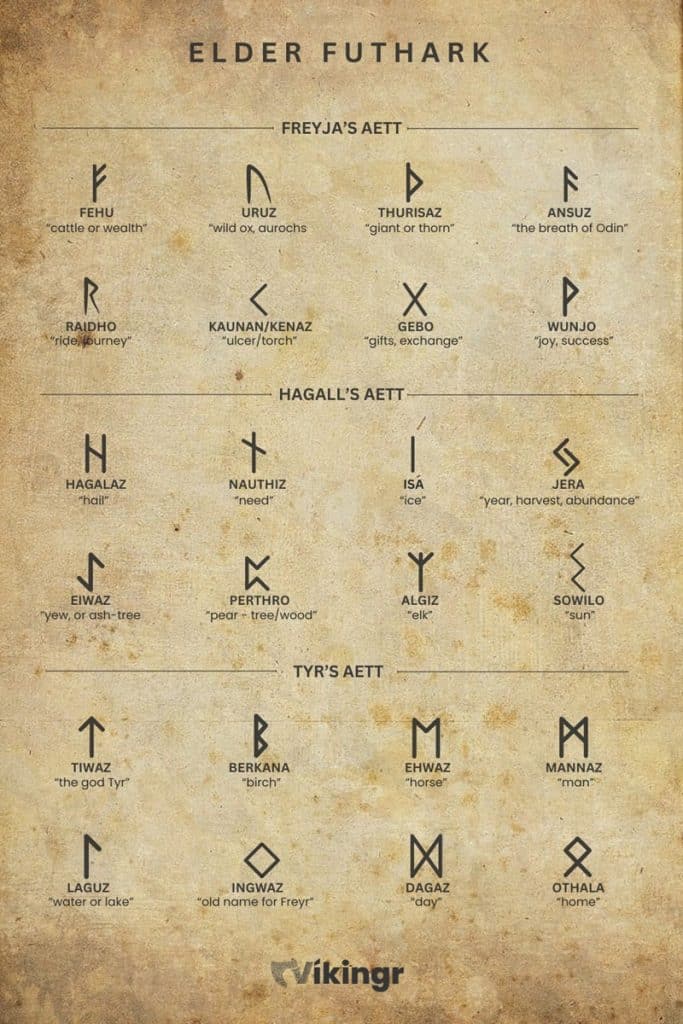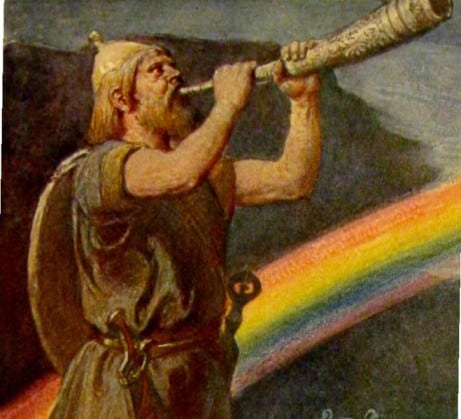As I am working through all the runes of the Elder Futhark, we come to a really unique one. It is the fourteenth rune in this ancient alphabet, Perthro, a rune shrouded in mystery and intrigue.
Perthro: Background and Description
Let’s start at the beginning, with the Elder Futhark, the oldest form of the runic alphabets. It came into use around two thousand years ago and was in use right up to the early Viking Age. Largely coinciding with the start of the Viking Age, the runic system in use in Scandinavia went through a transformation. It was simplified from its initial 24 letters, into a shorter 16 letter one called the Younger Futhark.
The Elder Futhark, the ancient runic system that Perthro is a part of, was widely adopted across Europe. From the chilly landscapes of Scandinavia to the verdant isles of Britain, and even extending far to the south of Europe, these runes left their legacy.
Perthro, the fourteenth rune in this alphabet, follows the yew tree rune Eiwaz and precedes the protective rune Algiz. Old Norse “Peorð,” it’s one of the few runes whose name doesn’t have a clear translation in modern languages. While its meaning is not well known, some theorize it might mean pear-tree. This adds an extra layer of mystery to Perthro, making it a fascinating subject of study.

Graphical Representation
Visually, Perthro is a simple yet elegant rune. It’s honestly a bit difficult to describe for those of you who can’t see the image of it here, but I’ll give it my best. It is largely a long vertical line with two short lines attached to the top and bottom, pointing to the right. These two short lines are curved so as to look almost like brackets, only they are facing away from each other, instead of being curved towards one another.
With such an intricate design, no surprise there are variations of Perthro’s design that have been found. Some inscriptions show the rune with a more angular curve or with a closed bottom. However, the traditional form remains the most recognized and used.
Phonetic Value
In the Proto-Germanic language, Perthro represented the sound “p,” as in “pear.” As Germanic languages evolved, so did the pronunciation of this rune. In Old Norse, for example, it was pronounced as a soft “p.”
Symbolic Meaning of the Perthro Rune
Now, let’s delve into the symbolic heart of Perthro.
Traditionally, people associate this rune with mystery, chance, and the unknown. It represents the roll of the dice and the unpredictable nature of fate as well as the mysteries that lie beyond our understanding.
Additionally, they link the rune to the concept of a cup, a vessel that holds something unknown or hidden. This could be a secret, a hidden truth, or even the mysteries of our own subconscious.

The Aett and its Symbolism
Perthro belongs to the second aett of the Elder Futhark, a group of eight runes known as Heimdall’s aett. This aett, or family of runes, carries themes of protection and vigilance, as well as the struggle against the unknown.
Heimdall is a central figure in this aett. Known for his keen senses and vigilance, Heimdall is the protector of the gods, always on the lookout for the approach of the giants. Perthro, with its themes of mystery and the unknown, adds a layer of complexity to this aett. Moreover, it is reminding us that life often involves facing the unknown and embracing the mysteries.
People often link Perthro’s symbolism with the concept of mystery and the unknown. It appears as a representation of the randomness of fate and the mysteries that elude our understanding. This interpretation stems from the rune’s traditional connection with games of chance and the roll of the dice.

Elder Futhark Quiz
Do you want to test your knowledge of Elder Futhark runes? Then this quiz is perfect for you!
Don’t forget to play our other games as well!
Perthro Used in Divination and Magic
In the realm of divination, Perthro is seen as a sign of something hidden coming to light. It could be a secret, an unexpected event, or a revelation about oneself. It’s a rune that encourages us to embrace the unknown and to trust in the process of life.
While I don’t personally subscribe to these beliefs, I find them fascinating. The rune was thought to be used in spells and rituals related to divination and the uncovering of hidden knowledge. It also had an association with the practices of lot casting, a form of divination involving throwing objects and interpreting their fall.
Perthro in the Younger Futhark – The Vanishing Mystery
As the Elder Futhark transitioned into the Younger Futhark, also known as Norse runes, around the 7th and 8th centuries, Perthro, representing mystery or fate, vanished. Its disappearance signifies a transformation in the expression and understanding of fate, mystery, and the unknown.
Frequently Asked Questions
Perthro embodies mystery, the unknown, and the roll of the dice, while linking itself to concealed truths and the capricious character of fate.
In divination practices, observers interpret Perthro as a sign that will soon reveal something concealed. It encourages us to embrace the unknown and trust in the process of life.
In the Proto-Germanic language, Perthro represented the sound “p.”
Featured Image Credit: BK, Public domain, via Wikimedia Commons
